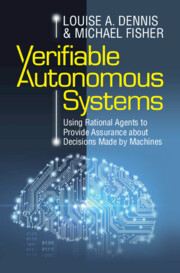Refine search
Actions for selected content:
48284 results in Computer Science
Figures
-
- Book:
- Handbook of Augmented Reality Training Design Principles
- Published online:
- 18 May 2023
- Print publication:
- 01 June 2023, pp x-xi
-
- Chapter
- Export citation
Dedication
-
- Book:
- Handbook of Augmented Reality Training Design Principles
- Published online:
- 18 May 2023
- Print publication:
- 01 June 2023, pp v-vi
-
- Chapter
- Export citation
Contents
-
- Book:
- Handbook of Augmented Reality Training Design Principles
- Published online:
- 18 May 2023
- Print publication:
- 01 June 2023, pp vii-ix
-
- Chapter
- Export citation
Polish natural language inference and factivity: An expert-based dataset and benchmarks
-
- Journal:
- Natural Language Engineering / Volume 30 / Issue 2 / March 2024
- Published online by Cambridge University Press:
- 01 June 2023, pp. 385-416
-
- Article
-
- You have access
- Open access
- HTML
- Export citation
Chapter 4 - Scenario Building
-
- Book:
- Handbook of Augmented Reality Training Design Principles
- Published online:
- 18 May 2023
- Print publication:
- 01 June 2023, pp 34-49
-
- Chapter
- Export citation
Preface
-
- Book:
- Handbook of Augmented Reality Training Design Principles
- Published online:
- 18 May 2023
- Print publication:
- 01 June 2023, pp xiii-xv
-
- Chapter
- Export citation
Chapter 5 - Fidelity and Realism
-
- Book:
- Handbook of Augmented Reality Training Design Principles
- Published online:
- 18 May 2023
- Print publication:
- 01 June 2023, pp 50-75
-
- Chapter
- Export citation
Chapter 6 - Supporting Mental Model Construction
-
- Book:
- Handbook of Augmented Reality Training Design Principles
- Published online:
- 18 May 2023
- Print publication:
- 01 June 2023, pp 76-90
-
- Chapter
- Export citation
Chapter 1 - Introduction
-
- Book:
- Handbook of Augmented Reality Training Design Principles
- Published online:
- 18 May 2023
- Print publication:
- 01 June 2023, pp 1-7
-
- Chapter
- Export citation
Chapter 7 - Scaffolding and Reflection
-
- Book:
- Handbook of Augmented Reality Training Design Principles
- Published online:
- 18 May 2023
- Print publication:
- 01 June 2023, pp 91-118
-
- Chapter
- Export citation
Improving semantic coverage of data-to-text generation model using dynamic memory networks
-
- Journal:
- Natural Language Engineering / Volume 30 / Issue 3 / May 2024
- Published online by Cambridge University Press:
- 31 May 2023, pp. 454-479
-
- Article
-
- You have access
- Open access
- HTML
- Export citation
Two-level type theory and applications
-
- Journal:
- Mathematical Structures in Computer Science / Volume 33 / Issue 8 / September 2023
- Published online by Cambridge University Press:
- 30 May 2023, pp. 688-743
-
- Article
-
- You have access
- Open access
- HTML
- Export citation
Dual arm coordination of redundant space manipulators mounted on a spacecraft
-
- Article
-
- You have access
- Open access
- HTML
- Export citation
Urdu paraphrase detection: A novel DNN-based implementation using a semi-automatically generated corpus
-
- Journal:
- Natural Language Engineering / Volume 30 / Issue 2 / March 2024
- Published online by Cambridge University Press:
- 29 May 2023, pp. 354-384
-
- Article
-
- You have access
- Open access
- HTML
- Export citation
Theoretical study on a modified rocker-bogie suspension for robotic rovers
-
- Article
-
- You have access
- Open access
- HTML
- Export citation
Subject specific optimal control of powered knee exoskeleton to assist human lifting tasks under controlled environment
-
- Article
-
- You have access
- Open access
- HTML
- Export citation

Verifiable Autonomous Systems
- Using Rational Agents to Provide Assurance about Decisions Made by Machines
-
- Published online:
- 25 May 2023
- Print publication:
- 08 June 2023








